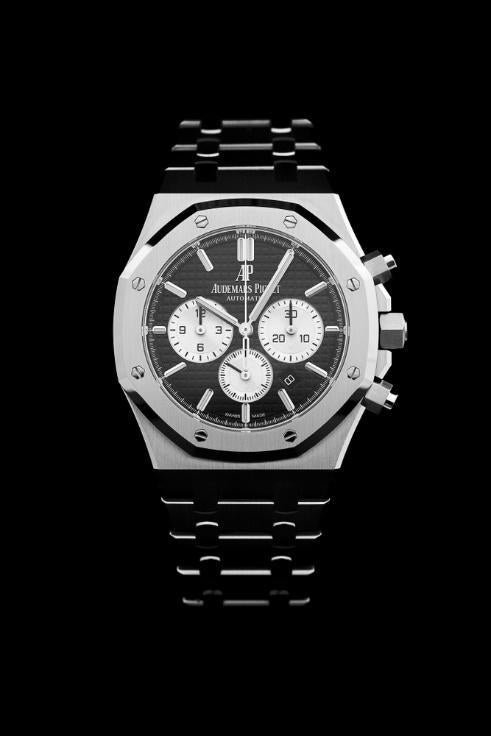
Audemars Piguet is a notable name in the world of watchmaking and the only established Swiss company that is still family-owned 140 years after its foundation. The company has stayed true to its motto: "To break the rules, you must first master them," and continues to come up with innovative ideas generation after generation.
But how did it all come into being? Who was responsible for the origination of the most impactful watchmaking brand in the world? Read on as we delve deeper into Audemars Piguet's history and draw a timeline of the significant events that helped shape the brand's bright future.
Founding Years
A common misconception about Audemars Piguet is that people assume it's a single person's first and last name. The brand was created by two childhood friends, Jules Louis Audemars and Edward Auguste Piguet, and combines their surnames.
While both friends drifted apart in their early teens, they eventually reconnected around the 1870s based on their shared interest in creating mechanical timepieces. However, it wasn't until 1875 that they officially joined hands to lay the foundation of Audemars Piguet in Le Brassus, a village in Vallée de Joux, Switzerland.
Audemars and Piguet decided to split their responsibilities to run the company efficiently. Having previously worked with Tiffany to create watch movements, Audemars took over the production of watches and their technical aspects. Meanwhile, Piguet, an expert at watch regulation, devoted his time to sales and management.
From there, Audemars and Piguet started their venture as one of the first watchmakers in Europe and America to manufacture high-quality, innovative pocket and wristwatches.
Grand Complication
With the founders' visionary workmanship and determined spirits, success soon came running after the company. In 1892, Audemars Piguet developed the first-minute repeater wristwatch.
The minute repeater used internal hammers and a slide-piece to produce chiming sounds. It dictated the watch's exact hour, quarter, and minute on demand. These repeaters were helpful to keep track of time in the dark before the spread of electricity and soon became dainty items that only the rich could afford.
However, the earliest accredited achievement of Audemars Piguet was the introduction of the Grand Complication in 1899. For the first time, a pocket watch was developed that combined several complications and won a special award at the world exhibition in Paris.
In the watchmaking world, complication is a term used to define a function beyond indicating the time. The first complication watch included a grand and small strike gong, chronograph, minute repeater, alarm, and a perpetual calendar.
The release of the Grand Complication helped Audemars Piguet stand on firm footing in the watchmaking world and move from their small home-based studio to a specially built factory in 1907.
The factory remained their headquarters, but the brand was about to go through a low point with the economic crisis of the First World War and the demise of the founding brothers.
Royal Oak
Audemars and Piguet tragically passed away between 1918 and 1919, leaving their sons, Paul Louis Audemars and Paul Edward Piguet, responsible for carrying on their legacy. The new manufacturers continued to work towards innovative ideas and produced remarkable results.
In 1921, the brand developed the first jumping hour wristwatch. Soon after, in 1925, they designed the thinnest pocket watch caliber, closely followed by the first skeletonized pocket watch in 1934 and the world's thinnest wristwatch in 1946. By the post-war period, Audemars Piguet had established themselves as pioneers in the watchmaking industry, but their biggest success was yet to come.
During the 1970s, quartz wristwatches, designed in Asian countries, took the world by storm. These watches were cheaper to make and affordable to buy, and soon western watchmakers found themselves going into recession.
Audemars and Piguet took a radically different approach to counter this issue and hired the renowned, idealistic Swiss watch designer and artist Gerald Genta. They collaborated to create one of its kind luxury sports watches, and Royal Oak was released to the public at the Swiss Watch Show in 1972.
The Royal Oak was one of the most daring works of art developed by the brand. The watch was made of stainless steel material with an integrated bracelet. It took heavy influence from the old-fashioned diving helmet style and featured a circular dial inside an octagon bezel. The bezel came with an eight-screw set within a tonneau-shaped casing.
Although the Royal Oak did not gain immediate popularity upon its release, given its high price and distinctive boxy structure, the watch has gained a dedicated fanbase over the years. It became a trendsetter for luxury sports watches and is still one of the most desirable models, with the football star Lionel Messi being one of its many admirers.
The release of Royal Oak officially craved Audemars Piguet's name in the watchmaking industry as they embarked on the journey of making avant-garde watches and never looked back.
The Millenary Collection
After establishing its name in horological history, Audemars Piguet came up with several groundbreaking advancements during the 1990s. These helped build onto its increasingly growing fan following and set the stage for smart, modern watches we see and treasure today.
Audemars Piguet started the decade with the release of the Star Wheel collection in 1991. These models paid homage to the wandering hour complications of the 1700s and combined history, technical obstacles, and creative designs. Star wheel wristwatches consisted of rotating discs mounted on wheels sculpted into star shapes. They were the earliest of the new ultra-contemporary timepieces that became an audience favorite.
Following this, Audemars Piguet started developing another out-of-the-box watch collection to honor their third millennium in watchmaking. The Millenary collection was made public in 1995, based on the brand's 1951 case design. It took inspiration from the Colosseum of Rome and is characterized by its remarkably elliptical case, decentralized dial, and smooth, skeletonized movements.
From there onwards until the present day, Audemars Piguet has introduced multiple models which watch wearers and collectors across the globe have applauded. They have also expanded to produce women's watches and incorporate ceramics in their latest models.
Conclusion
Audemars Piguet has survived four generations and has come a long way from where it began. The brand started as a small-based business and, with dedication, vision, and bravery, has become one of the most sought-after names in the watchmaking world over the years. From the Royal Oak to the Millenary collection, each model of Audemars Piguet is a piece of art that leaves the collectors amused and satisfied.
If you are a watch collector keen on investing in a rich, innovative timepiece, knowing Audemars Piguet's history will help you make this decision and ultimately decide which watch model appeals to you the most.




